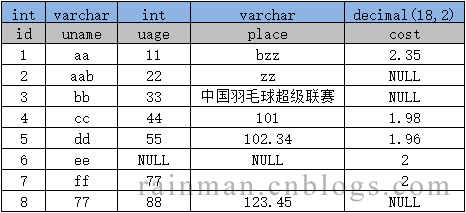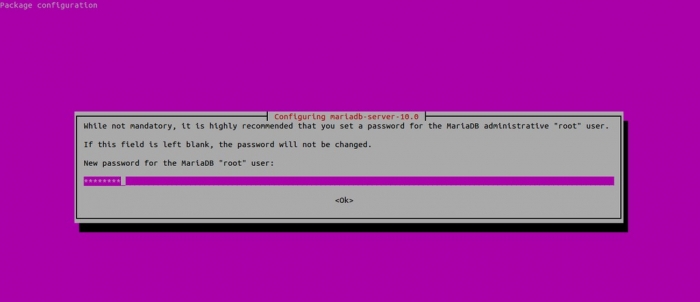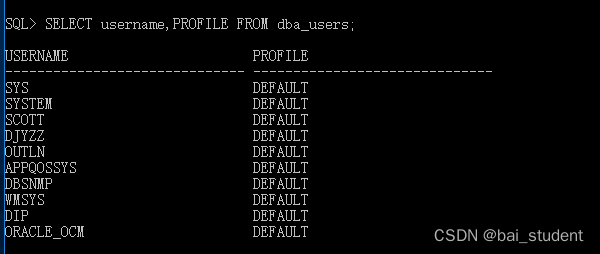一、Redis 事务与锁机制1.Redis的基础事务在Redis中开启事务的命令是 multi 命令, 而执行事务的命令是 exec 命令。multi 到 exec 命令之间的 Redis 命令将采取进入队列的形式,直至 exec 命令的出现,才会一次性发送...

一、Redis 事务与锁机制

1.Redis的基础事务
在Redis中开启事务的命令是 multi 命令, 而执行事务的命令是 exec 命令。multi 到 exec 命令之间的 Redis 命令将采取进入队列的形式,直至 exec 命令的出现,才会一次性发送队列里的命令去执行,而在执行这些命令的时候其他客户端就不能再插入任何命令了。
127.0.0.1:6379> multi OK 127.0.0.1:6379> set key1 value1 QUEUED 127.0.0.1:6379> get key1 QUEUED 127.0.0.1:6379> exec 1) OK 2) "value1"
如果回滚事务,可以使用 discard 命令取消事务中所有命令,使事务中的方法不会被执行了。
127.0.0.1:6379> multi OK 127.0.0.1:6379> set key1 value1 QUEUED 127.0.0.1:6379> get key1 QUEUED 127.0.0.1:6379> discard OK 127.0.0.1:6379> exec (error) ERR EXEC without MULTI
2.在Spring中使用Redis事务
SessionCallback接口可以保证所有的命令都是通过同一个 Redis 连接进行操作的。
public static void testTransaction() {
ApplicationContext applicationContext = new ClassPathXmlApplicationContext("applicationContext.xml");
RedisTemplate redisTemplate = applicationContext.getBean(RedisTemplate.class);
SessionCallback callBack = (SessionCallback) (RedisOperations ops) -> {
ops.multi(); // 开启事务
ops.boundValueOps("key1").set("value1");
// 注意由于命令只是进入队列,而没有被执行,所以此处采用get命令返回值为null
String value = (String) ops.boundValueOps("key1").get();
System.out.println("value = " + value);
// list保存之前进入队列的所有命令的结果
List list = ops.exec();// 执行事务
// 事务结束后,取出value1
value = (String) redisTemplate.opsForValue().get("key1");
return value;
};
// 执行Redis命令
String value = (String) redisTemplate.execute(callBack);
System.out.println(value);
}
返回结果:
value = null
value1
3.Redis 事务回滚的两种情况
- 命令格式正确,而数据类型错误时,仅回滚数据类型错误的那条命令
127.0.0.1:6379> multi OK 127.0.0.1:6379> set key1 value1 QUEUED 127.0.0.1:6379> set key2 value2 QUEUED 127.0.0.1:6379> incr key1 QUEUED 127.0.0.1:6379> del key2 QUEUED 127.0.0.1:6379> exec 1) OK 2) OK 3) (error) ERR value is not an integer or out of range 4) (integer) 1
- 命令格式不正确时,直接回滚所有命令
127.0.0.1:6379> multi OK 127.0.0.1:6379> set key1 value1 QUEUED 127.0.0.1:6379> incr (error) ERR wrong number of arguments for 'incr' command 127.0.0.1:6379> set key2 value2 QUEUED 127.0.0.1:6379> exec (error) EXECABORT Transaction discarded because of previous errors. 127.0.0.1:6379> get key1 (nil) 127.0.0.1:6379> get key2 (nil)
4.使用 watch 命令监控事务
在 Redis 中使用 watch 命令可以决定事务是执行还是回滚。一般而言,可以在 multi 命令之前使用 watch 命令监控某些键值对,然后使用 multi 命令开启事务。当Redis 使用 exec 命令执行事务的时候,它首先会去对比被 watch 命令所监控的键值对,如果没有发生变化,那么它会执行事务队列中的命令,提交事务;如果发生变化,那么它不会执行任何事务中的命令,而去事务回滚。无论事务是否回滚,Redis都会去取消执行事务前的watch命令:

Redis 参考了多线程中使用的 CAS (比较与交换,Compare and Swap)去执行的。当一条线程去执行某些业务逻辑,但是这些业务逻辑操作的数据可能被其他线程共享了,这样会引发多线程中数据不一致的情况。为了克服这个问题,在线程开始时读取这些多线程共享的数据,并将其保存到当前线程的副本中,称为旧值(old value),watch命令就是这样的一个功能。然后,开启线程业务逻辑,由multi命令提供这个功能。在执行更新即exec命令前,比较当前线程副本保存的旧值和当前线程共享的值是否一致,如果不一致,那么该数据已经被其他线程操作过,此次更新失败,事务回滚;否则就认为它没有被其他线程操作过,就执行对应的业务逻辑。在数据高并发环境的操作中,把这样的机制称为乐观锁。
CAS 会产生 ABA 问题,而 Redis不会产生 ABA 问题。

产生ABA问题的根本原因就是仅仅只记录一个旧值,解决办法例如有Hibernate中对缓存的持久对象加入字段 version 值,每操作一次持久对象,就令version++,可以解决ABA问题。
Redis多个事务完全可以在非阻塞的多线程环境下并发执行,而且Redis的机制是不会产生ABA问题的。
例如:成功提交事务的例子:
127.0.0.1:6379> flushdb OK 127.0.0.1:6379> set key1 value1 OK 127.0.0.1:6379> watch key1 OK 127.0.0.1:6379> multi OK 127.0.0.1:6379> set key2 value2 QUEUED 127.0.0.1:6379> get key2 QUEUED 127.0.0.1:6379> exec 1) OK 2) "value2" 127.0.0.1:6379> get key1 "value1" 127.0.0.1:6379> get key2 "value2"
二、流水线(PipeLined)
当需要使用队列批量执行一系列的命令时,Pipelined可以提高系统性能。
Redis执行读/写速度非常快,但是系统的瓶颈往往是在网络通信中的时延:

为了解决这个问题,可以使用Redis的流水线,Redis的流水线是一种通信协议:
1.使用 Java API
public static void testJedisPipeline() {
JedisPool pool = getPool();
Jedis jedis = pool.getResource();
long start = System.currentTimeMillis();
// 开启流水线
Pipeline pipeline = jedis.pipelined();
// 测试十万条读/写操作
for (int i = 0; i < 100000; i++) {
int j = i + 1;
pipeline.set("pipeline_key_" + j, "pipeline_value_" + j);
pipeline.get("pipeline_key_" + j);
}
// pipeline.sync();// 只执行同步,不返回结果
// pipeline.syncAndReturnAll(); 将返回执行过的命令放入List列表中
List result = pipeline.syncAndReturnAll();
long end = System.currentTimeMillis();
System.err.println("耗时: " + (end - start) + "毫秒");
}
返回:耗时: 499毫秒
2.在Spring中使用流水线
public static void testPipeline() {
ApplicationContext applicationContext = new ClassPathXmlApplicationContext("applicationContext.xml");
RedisTemplate redisTemplate = applicationContext.getBean(RedisTemplate.class);
SessionCallback callBack = (SessionCallback) (RedisOperations ops) -> {
for (int i = 0; i < 100000; i++) {
int j = i + 1;
ops.boundValueOps("pipeline_key_" + j).set("pipeline_value_" + j);
ops.boundValueOps("pipeline_key_" + j).get();
}
return null;
};
long start = System.currentTimeMillis();
// 执行 Redis 的流水线命令
List resultList = redisTemplate.executePipelined(callBack);
long end = System.currentTimeMillis();
System.out.println(end - start);
}
返回:511
三、发布订阅
当使用银行卡消费的时候,银行往往会通过微信、短信或者邮件通知用户这笔交易的信息,这便是一种发布/订阅模式。
发布订阅模式首先需要消息源,也就是要有消息发布出来,比如银行通知。首先是银行的记账系统收到了交易的命令,交易成功后,就会把消息发送出来,订阅者就可以接收到这个消息。
发布订阅需要两点:
- 要有发送的消息渠道,让记账系统能够发送消息
- 要有订阅者订阅这个渠道的消息
1.Redis中的发布订阅
客户端1监听一个叫做chat的频道:SUBSCRIBE chat
客户端2在chat上发送消息:publish chat “hello”
此时,客户端1就收到了客户端2发送到chat上面的消息:“hello”
2.在Spring环境下使用发布订阅
(1)Spring中,接收者需要实现MessageListener接口,并实现其中的onMessage方法
package com.ssm.chapter19.redis.listener;
import org.springframework.data.redis.connection.Message;
import org.springframework.data.redis.connection.MessageListener;
import org.springframework.data.redis.core.RedisTemplate;
public class RedisMessageListener implements MessageListener {
private RedisTemplate redisTemplate;
public RedisTemplate getRedisTemplate() {
return redisTemplate;
}
public void setRedisTemplate(RedisTemplate redisTemplate) {
this.redisTemplate = redisTemplate;
}
@Override
public void onMessage(Message message, byte[] bytes) {
// 获取消息
byte[] body = message.getBody();
// 使用值反序列化其转换
String msgBody = (String) getRedisTemplate().getValueSerializer().deserialize(body);
System.err.println(msgBody);
// 获取频道
byte[] channel = message.getChannel();
// 使用字符串序列化器转换
String channelStr = (String) getRedisTemplate().getStringSerializer().deserialize(channel);
System.err.println(channelStr);
// 将频道名称的字节数组转换成字符串
String bytesStr = new String(bytes);
System.err.println(bytesStr);
}
}
(2)在Spring 配置文件中配置这个类
<bean id="redisMsgListener"
class="com.ssm.chapter19.redis.listener.RedisMessageListener">
<property name="redisTemplate" ref="redisTemplate" />
</bean>
(3)还需要配置监听容器RedisMessageListenerContainer可以用于监听Redis的发布订阅消息,指定频道名称为chat
当消息通过chat发送时,就会使用redisMsgListener进行处理。
<bean id="topicContainer" class="org.springframework.data.redis.listener.RedisMessageListenerContainer"
destroy-method="destroy">
<!--Redis连接工厂 -->
<property name="connectionFactory" ref="connectionFactory" />
<!--连接池,这里只要线程池生存,才能继续监听 -->
<property name="taskExecutor">
<bean
class="org.springframework.scheduling.concurrent.ThreadPoolTaskScheduler">
<property name="poolSize" value="2" />
</bean>
</property>
<!--消息监听Map -->
<property name="messageListeners">
<map>
<!--配置监听者,key-ref和bean id定义一致 -->
<entry key-ref="redisMsgListener">
<!--监听类 -->
<bean class="org.springframework.data.redis.listener.ChannelTopic">
<constructor-arg value="chat" />
</bean>
</entry>
</map>
</property>
</bean>
(4)测试:执行下面的方法后,控制台输出结果为:
public static void testPubSub() {
ApplicationContext applicationContext = new ClassPathXmlApplicationContext("applicationContext.xml");
RedisTemplate redisTemplate = applicationContext.getBean(RedisTemplate.class);
String channel = "chat";
redisTemplate.convertAndSend(channel, "I am lazy!!");
}
控制台输出结果为:
I am lazy!! chat chat
四、超时命令
对于Redis而言,del命令可以删除一些键值对,所以Redis比Java虚拟机更加灵活,与此同时,当内存运行空间满了之后,还可以按照回收机制自动回收一些键值对。
但是,当垃圾进行回收的时候,又有可能执行回收而引发系统停顿,因此选择适当的回收机制和时间将有利于系统性能的提高。
Redis可以给对应的键值设置超时:

1.在Redis中测试超时命令
127.0.0.1:6379> set key1 value1 OK 127.0.0.1:6379> get key1 "value1" 127.0.0.1:6379> ttl key1 (integer) -1 127.0.0.1:6379> expire key1 120 (integer) 1 127.0.0.1:6379> ttl key1 (integer) 112 127.0.0.1:6379> ttl key1 (integer) 110 127.0.0.1:6379> ttl key1 (integer) 110 127.0.0.1:6379> ttl key1 (integer) 108 127.0.0.1:6379> ttl key1 (integer) 65 127.0.0.1:6379> persist key1 (integer) 1 127.0.0.1:6379> persist key1 (integer) 0 127.0.0.1:6379> ttl key1 (integer) -1
2.在Spring中使用超时命令
public static void testExpire() {
ApplicationContext applicationContext = new ClassPathXmlApplicationContext("applicationContext.xml");
RedisTemplate redisTemplate = applicationContext.getBean(RedisTemplate.class);
redisTemplate.execute((RedisOperations ops) -> {
ops.boundValueOps("key1").set("value1");
String keyValue = (String) ops.boundValueOps("key1").get();
Long expSecond = ops.getExpire("key1");
System.err.println(expSecond);
boolean b = false;
b = ops.expire("key1", 120L, TimeUnit.SECONDS);
b = ops.persist("key1");
Long l = 0L;
l = ops.getExpire("key1");
Long now = System.currentTimeMillis();
Date date = new Date();
date.setTime(now + 120000);
ops.expireAt("key", date);
return null;
});
}
3.问题:如果key超时了,Redis 会回收key的存储空间吗?
不会。Redis的key超时不会被其自动回收,它只会标识哪些键值对超时了。
这样做的好处是,如果一个很大的键值对超时,必须一个列表或者哈希结构,存在数以百万个元素,要对其回收需要很长时间。如果采用超时回收,则可能产生系统停顿。坏处也很明显,就是超时的键值对会浪费比较多的空间。
Redis 提供两种方式回收超时键值对:
- 定时回收:在确定的某个时间触发一段代码,回收超时的键值对。定时回收可以完全回收那些超时的键值对,但是缺点也很明显,如果这些键值对比较多,则Redis需要运行较长的时间,从而导致停顿。一般会选择在没有业务发生的时刻触发Redis的定时回收,以便清理超时的键值对。
- 惰性回收:当一个超时的键,被再次用get命令访问时,将触发Redis将其从内存中情况。优势是可以指定回收超时的键值对,缺点是要执行一个get操作,或者在某些时候,难以判断哪些键值对已经超时。
五、使用Lua语言
Redis 命令的计算能力不算很强大,而使用Lua语言则在很大程度上弥补了 Redis 这个不足。只是在 Redis中,执行 Lua 语言是原子性的,也就是Redis执行Lua的时候是不会被中断的。
Redis支持阆中方式运行Lua,一种是直接输入;另外一种是将 Lua 语言编写成文件。
1.执行输入Lua程序代码
eval lua-script key-num [key1 key2 key3 ...] [value1 value2 value3 ...] eval:执行Lua语言的命令 Lua-script:代表Lua语言脚本 key-num:代表参数中有多少个key,没有为0 [key1 key2 key3 ...]:以key为参数 [value1 value2 value3 ...]:将这些参数传递给Lua
例如:
127.0.0.1:6379> eval "return 'hello java'" 0
"hello java"
127.0.0.1:6379> eval "redis.call('set',KEYS[1],ARGV[1])" 1 lua-key lua-value
(nil)
127.0.0.1:6379> get lua-key
"lua-value"
有时可能需要多次执行同一段脚本,在Redis中脚本会通过SHA-1签名算法加密脚本,返回一个标识字符串,可以通过这个字符串执行加密后的脚本。这样的好处是,如果脚本很长,从客户端传输可能需要很长的时间,那么使用标识字符串,则只需要传递32位字符串即可,这样可以提高传输的效率,从而提高性能。
127.0.0.1:6379> script load "redis.call('set',KEYS[1],ARGV[1])"
"7cfb4342127e7ab3d63ac05e0d3615fd50b45b06"
127.0.0.1:6379> evalsha 7cfb4342127e7ab3d63ac05e0d3615fd50b45b06 1 sha-key sha-value
(nil)
127.0.0.1:6379> get sha-key
"sha-value"
2.在Spring 中使用 Lua 脚本存储简单字符串
public static void testLuaScript() {
ApplicationContext applicationContext = new ClassPathXmlApplicationContext("applicationContext.xml");
RedisTemplate redisTemplate = applicationContext.getBean(RedisTemplate.class);
Jedis jedis = (Jedis) redisTemplate.getConnectionFactory().getConnection().getNativeConnection();
// 执行简单的脚本
String helloJava = (String) jedis.eval("return 'hello java'");
System.out.println(helloJava);
// 执行带参数的脚本
jedis.eval("redis.call('set',KEYS[1], ARGV[1])", 1, "lua-key", "lua-value");
String luaKey = (String) jedis.get("lua-key");
System.out.println(luaKey);
// 缓存脚本,返回SHA1签名标识字符串
String sha1 = jedis.scriptLoad("redis.call('set',KEYS[1], ARGV[1])");
// 执行脚本
jedis.evalsha(sha1, 1, new String[] { "sha-key", "sha-val" });
// 获取执行脚本后的数据
String shaVal = jedis.get("sha-key");
System.out.println(shaVal);
// ?关闭连接
jedis.close();
}
3.在Spring中使用Lua脚本存储对象
Spring 提供了 RedisScript 接口和一个实现类 DefaultRedisScript ,通过这个对象就可以通过Lua脚本操作对象。
public static void testRedisScript() {
ApplicationContext applicationContext = new ClassPathXmlApplicationContext("applicationContext.xml");
RedisTemplate redisTemplate = applicationContext.getBean(RedisTemplate.class);
// 定义默认脚本封装类
DefaultRedisScript<Role> redisScript = new DefaultRedisScript<Role>();
// 设置脚本
redisScript.setScriptText("redis.call('set', KEYS[1], ARGV[1]) return redis.call('get', KEYS[1])");
// 定义操作的key列表
List<String> keyList = new ArrayList<String>();
keyList.add("role1");
// 需要序列化保存和读取的对象
Role role = new Role();
role.setId(1L);
role.setRoleName("role_name_1");
role.setNote("note_1");
// 获得标识字符串
String sha1 = redisScript.getSha1();
System.out.println(sha1);
// 设置返回结果类型为Role类型
redisScript.setResultType(Role.class);
// 使用JdkSerializationRedisSerializer进行序列化
JdkSerializationRedisSerializer serializer = new JdkSerializationRedisSerializer();
// 执行脚本
// DefaultRedisScript接口对象,参数序列化器,结果序列化器,key列表,参数列表
Role obj = (Role) redisTemplate.execute(redisScript, serializer, serializer, keyList, role);
// 打印返回结果
System.out.println(obj.getId());
}
返回:
731429de653665577edb661a6741c4083e103b77 1
4.执行Lua文件
新建Lua文件test.lua
redis.call('set', KEYS[1], ARGV[1])
redis.call('set', KEYS[2], ARGV[2])
local n1 = tonumber(redis.call('get', KEYS[1]))
local n2 = tonumber(redis.call('get', KEYS[2]))
if n1 > n2 then
return 1
end
if n1 == n2 then
return 0
end
if n1 < n2 then
return 2
end
在命令行输入 redis-cli --eval test.lua key1 key2 , 2 4 会返回:2
在 Spring 中,只能通过evalsha的方式执行Lua文件,例如:
public static void testLuaFile() {
ApplicationContext applicationContext = new ClassPathXmlApplicationContext("applicationContext.xml");
RedisTemplate redisTemplate = applicationContext.getBean(RedisTemplate.class);
// 读入文件流
File file = new File("D:\\BaiduNetdiskDownload\\ssm\\Chapter19\\src\\test.lua");
byte[] bytes = getFileToByte(file);
Jedis jedis = (Jedis) redisTemplate.getConnectionFactory().getConnection().getNativeConnection();
// 发送二进制文件给Redis服务器,得到标识数组
byte[] sha1 = jedis.scriptLoad(bytes);
// 传递参数,执行Lua文件
Object obj = jedis.evalsha(sha1, 2, "key1".getBytes(), "key2".getBytes(), "2".getBytes(), "4".getBytes());
System.out.println(obj);
}
/**
* 把文件转化为二进制数组
*
* @param file
*
* @return 二进制数组
*/
public static byte[] getFileToByte(File file) {
byte[] by = new byte[(int) file.length()];
try {
InputStream is = new FileInputStream(file);
ByteArrayOutputStream bytestream = new ByteArrayOutputStream();
byte[] bb = new byte[2048];
int ch;
ch = is.read(bb);
while (ch != -1) {
bytestream.write(bb, 0, ch);
ch = is.read(bb);
}
by = bytestream.toByteArray();
} catch (Exception ex) {
ex.printStackTrace();
}
return by;
}
六、在Spring中使用 Redis 哨兵模式
1.配置文件
主服务器192.168.11.128,两个从服务器192.168.11.129、192.168.11.130。
然后在三台机器上分别启动哨兵服务。
<?xml version='1.0' encoding='UTF-8' ?>
<beans xmlns="http://www.springframework.org/schema/beans"
xmlns:xsi="http://www.w3.org/2001/XMLSchema-instance"
xsi:schemaLocation="http://www.springframework.org/schema/beans
http://www.springframework.org/schema/beans/spring-beans-4.0.xsd">
<!--配置Redis连接池 -->
<bean id="poolConfig" class="redis.clients.jedis.JedisPoolConfig">
<property name="maxIdle" value="50" /> <!--最大空闲数 -->
<property name="maxTotal" value="100" /> <!--最大连接数 -->
<property name="maxWaitMillis" value="3000" /> <!--最大等待时间3s -->
</bean>
<!--jdk序列化器,可保存对象 -->
<bean id="jdkSerializationRedisSerializer"
class="org.springframework.data.redis.serializer.JdkSerializationRedisSerializer" />
<!--String序列化器 -->
<bean id="stringRedisSerializer"
class="org.springframework.data.redis.serializer.StringRedisSerializer" />
<!--哨兵配置 -->
<bean id="sentinelConfig"
class="org.springframework.data.redis.connection.RedisSentinelConfiguration">
<!--服务名称 -->
<property name="master">
<bean class="org.springframework.data.redis.connection.RedisNode">
<property name="name" value="mymaster" />
</bean>
</property>
<!--哨兵服务IP和端口 -->
<property name="sentinels">
<set>
<bean class="org.springframework.data.redis.connection.RedisNode">
<constructor-arg name="host" value="192.168.11.128" />
<constructor-arg name="port" value="26379" />
</bean>
<bean class="org.springframework.data.redis.connection.RedisNode">
<constructor-arg name="host" value="192.168.11.129" />
<constructor-arg name="port" value="26379" />
</bean>
<bean class="org.springframework.data.redis.connection.RedisNode">
<constructor-arg name="host" value="192.168.11.130" />
<constructor-arg name="port" value="26379" />
</bean>
</set>
</property>
</bean>
<!--连接池设置 -->
<bean id="connectionFactory"
class="org.springframework.data.redis.connection.jedis.JedisConnectionFactory">
<constructor-arg name="sentinelConfig" ref="sentinelConfig" />
<constructor-arg name="poolConfig" ref="poolConfig" />
<property name="password" value="abcdefg" />
</bean>
<!--配置RedisTemplate -->
<bean id="redisTemplate" class="org.springframework.data.redis.core.RedisTemplate">
<property name="connectionFactory" ref="connectionFactory" />
<property name="keySerializer" ref="stringRedisSerializer" />
<property name="defaultSerializer" ref="stringRedisSerializer" />
<property name="valueSerializer" ref="jdkSerializationRedisSerializer" />
</bean>
</beans>
2.验证哨兵模式
关闭192.168.11.128主服务其上的Redis服务,然后3分钟后,哨兵会进行投票切换新的主机,然后执行下面的方法。
public static void testSpringSentinel() {
ApplicationContext ctx = new ClassPathXmlApplicationContext("com/ssm/chapter20/config/spring-cfg.xml");
RedisTemplate redisTemplate = ctx.getBean(RedisTemplate.class);
String retVal = (String) redisTemplate.execute((RedisOperations ops) -> {
ops.boundValueOps("mykey").set("myvalue");
String value = (String) ops.boundValueOps("mykey").get();
return value;
});
System.out.println(retVal);
}
七、Spring 缓存机制和Redis的结合
本文标题为:Redis(十五)Redis 的一些常用技术(Spring 环境下)


基础教程推荐
- redis乐观锁与悲观锁的实战 2023-07-13
- Java程序员从笨鸟到菜鸟(五十三) 分布式之 Redis 2023-09-11
- Mariadb数据库主从复制同步配置过程实例 2023-07-25
- oracle数据库排序后如何获取第一条数据 2023-07-24
- Windows10系统中Oracle完全卸载正确步骤 2023-07-24
- SQL Server如何设置用户只能访问特定数据库和访问特定表或视图 2023-07-29
- oracle19c卸载教程的超详细教程 2023-07-23
- redis 数据库 2023-09-13
- Python安装第三方库的方法(pip/conda、easy_install、setup.py) 2023-07-28
- Python常见库matplotlib学习笔记之画图中各个模块的含义及修改方法 2023-07-27

















